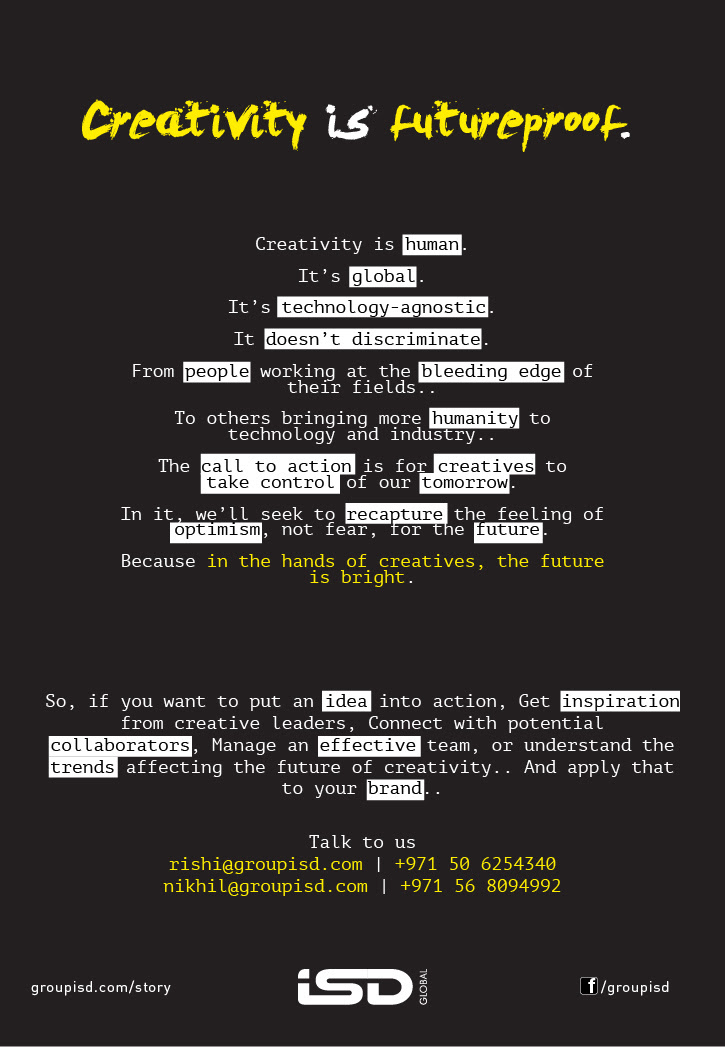The business world has launched a new quest. The ancient pursuits- for capital, for raw materials, for process technology- remain eternal. But now business seeks a new advantage- delicate and dangerous, and absolutely vital- the creativity advantage as a conduit to sustainable, cumulative, competitive advantage.
Way back in 1995, IBM acquired Lotus for US $ 3.5 Billion. Surely it was not just to get its software. Steven Spielberg, Jeffrey Katzenberg, and David Geffen did not estimate DreamWorks worth at US$ 2.7 Billion based on traditional capital assets- it had none. These companies bank their bottom line on fresh talent and new ideas-on the creative potential of their employees.
To survive and triumph in today’s marketplace, all organizations be it airlines, accounting firms, shoe makers, retail chains, software developers- must make creativity their number one priority.

Creativity has both a vocabulary and a grammar. It is both an art and a discipline. The jazz jam session is a brilliant metaphor for understanding creativity. You understand how a group of musicians can use their ideas to create new possibilities by challenging each other’s imagination while creating collective impact and individual brilliance. At once unpredictable and harmonious. Stimulating creativity is a process that can be observed, analysed, understood, replicated, taught and managed. Contrary to popular perception. Furthermore, managers must control without controlling and direct without directing and you will see that it is not as senseless as it sounds. Managers can’t demand creativity any more than they can order growth from a flower.
Like jazz, creativity has its vocabulary and conventions. As in jazz too, its paradoxes create tensions. It demands free expressiveness and disciplined self-control, solitude in a crowded room, acceptance and defiance, serendipity and direction.
All this is risky. Unavoidably so. When the alto sax player starts a solo, he doesn’t know where he is going, let alone how far and for how long. His inner voice- to which the music, the other musicians, the setting and ambience and even the listeners contribute- directs him. That’s the nature of improvisation and companies that aren’t willing to take its risks are not long for this fluid, protean, constantly challenging world. Companies that shun creative risks may be undercut by competitors not only with better products and services, but also with better processes and ways of perceiving new opportunities. Escaping the stagnation of the status quo, of the risk free life, is part of the exhilaration of jamming-in music and in business.
In jazz-and in business- the improvisational style derives its power from the way it juxtaposes certain vital human tensions or paradoxes. Here’s a partial list, in no particular order:
- The established( tradition, powers that be, status quo) in tension with the new
- The need for form in tension with the drive for openness
- Critical norms and standards in tension with the need to experiment
- The security of the familiar in tension with the lure of the unknown
- Responsiveness(responsibility) to the group in tension with individual expressiveness
- Discipline in tension with freedom
- Power in tension with desire
- Established theory in tension with persistent experimentation
- Expertise in tension with freshness, naivete
The choice is stark. Create or fail.

You write poetry for business Suresh.
Tastes like a ripe sugar cane
Gives the sugar rush and craving, both
Awesome
Thanks so much Vijay, appreciate and value your encouragement
Thanks a bunch for the kind words Vijay, very encouraging